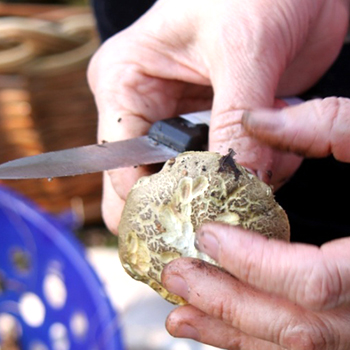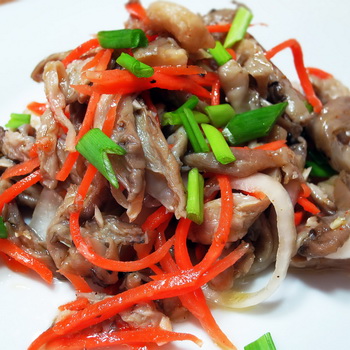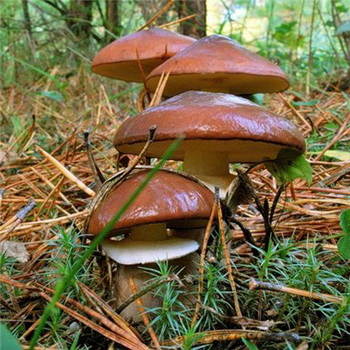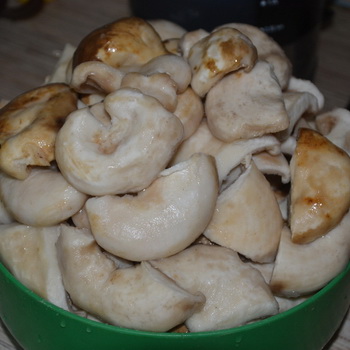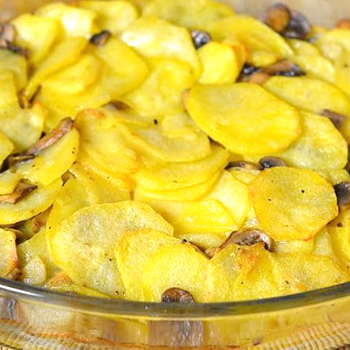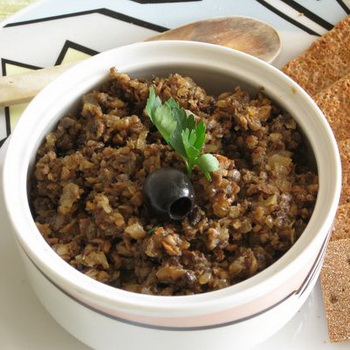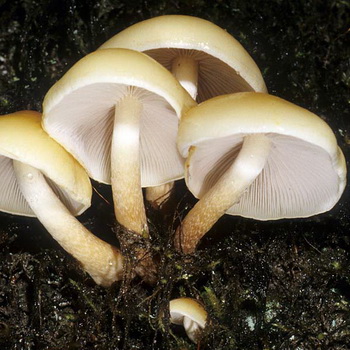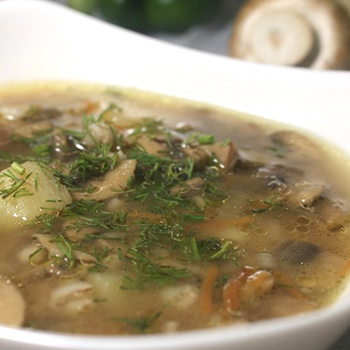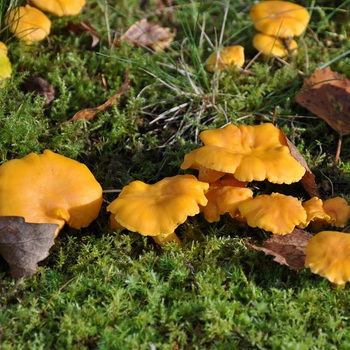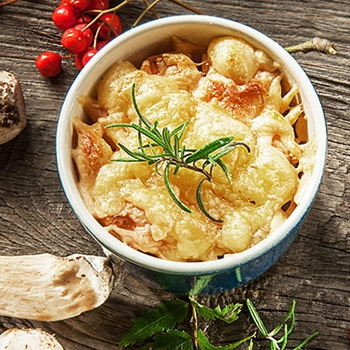Amanita poisonous mushroom: photo, use in folk medicine, where inedible mushrooms grow
 If the fly agaric is a poisonous mushroom, then a completely natural question arises: where to look for fly agaric and, most importantly, why do it? The answer is very simple - despite all their toxicity, some types of these "gifts of the forest", in the frequency of the fly agaric, are irreplaceable in folk medicine. True, these mushrooms have not passed clinical trials and therefore the data are based only on the words of the doctors themselves.
If the fly agaric is a poisonous mushroom, then a completely natural question arises: where to look for fly agaric and, most importantly, why do it? The answer is very simple - despite all their toxicity, some types of these "gifts of the forest", in the frequency of the fly agaric, are irreplaceable in folk medicine. True, these mushrooms have not passed clinical trials and therefore the data are based only on the words of the doctors themselves.
In this article, we will talk about the use of fly agaric in medicine, show a photo of red, white, panther and other types of fly agaric, give their description, and also inform where fly agarics grow.
Amanita mushroom red (poisonous, inedible) and its application
Poisonous fly agaric (Amanita muscaria) - a mushroom known even to children. He, like a red traffic light, warns: do not eat, do not touch!


However, pay attention to the photo of the red fly agaric: its cap is 6-7 cm in diameter, except for bright red it can be orange, yellow, less often red-brown. The second main sign of an inedible fly agaric is a kind of flocculent growths-warts of white color, which are easily washed off by rain. When broken, the red poisonous fly agaric does not emit an odor.
Leg (height 7-22 cm): cylindrical, white, less often yellowish, dotted with flaky remnants of the cap.
Pulp: dense, white, sometimes yellowish.
Plates: light white or cream-colored, frequent, large, may alternate with smaller ones.


Look at photos of poisonous amanitas growing in North America - they are pale yellow or light orange. At a young age, warts in red fly agaric mushrooms can almost completely hide the color of the cap.
Where does the red poisonous fly agaric grow
Every mushroom picker knows where the red fly agarics grow: they can be found: in coniferous forests with acidic soil, less often under birches. Common companions are forest spruces; less often whole families settle under birches.


The poisonous mushroom red fly agaric grows: from the second half of summer to mid-autumn, until the first frost, in the northern zone with a temperate climate. Distributed in almost all forests of Russia, except for the hot southern regions.
There are no doubles. Due to its remarkable appearance, the red fly agaric is difficult to confuse with another mushroom.
Amanita muscaria in folk medicine and rituals
Data on the use of red fly agaric in medicine have not been confirmed. It is claimed that inedible fly agaric caps are used in the treatment of a huge number of diseases, such as arthritis, rheumatism, sciatica, paralysis, sciatica, neuralgia and even oncology.
The ancient Indo-Iranians prepared the ritual drink of catfish from the juice of red fly agaric, coniferous ephedra bush and harmala flower. There is a version that he had some health properties. He was received while singing religious hymns. In the hymns of the Rig Veda, this drink is called "a child of the earth of red color without leaves, flowers and fruits, with a head resembling an eye."
Supporters of shamanic rituals, lovers of new sensations should remember that the content of toxic substances in red fly agarics is different, therefore, before committing this or that act, you should think about your own health. On average, for a lethal outcome, a healthy person will need 12-15 amanita caps, but depending on the age and other characteristics of the fungus, their number can be much smaller. Abuse in the use of red fly agaric, both in medicine and in rituals, can cause not only a feeling of weak intoxication or mild hallucinations, but also amnesia.
In Russia and Europe, people have used fly agaric as a means of fighting insects, in particular flies. A decoction was made from it, on which insects flocked and died. This is where the name of the mushroom comes from.
Eating: the mushroom is poisonous, therefore inedible.The peoples of Siberia, some countries of Europe and North America often consumed amanita as a hallucinogenic agent - it contains muscimol, which has psychotropic properties. In shamanic rituals, the red fly agaric was used as an intoxicating agent.
Amanita muscaria, poisonous: photo and description
The hat of a young poisonous panther fly agaric (Amanita pantherina) (diameter 5-11 cm) in the form of a hemisphere, eventually becomes completely flat with characteristic ribbed edges. This type of fly agaric got its name precisely because of the color of the cap.


Pay attention to the photo of the panther fly agaric: the flesh inside the cap is most often white and watery.
Leg (height 5-13 cm): in the form of a cylinder, tapering from bottom to top, has a ring-shaped volva of white or light gray color. Sometimes (not always!) There may be a fragile ring and small villi along the entire length of the leg. Amanita muscaria plates, according to their description, resemble those of a red mushroom - they are frequent, white or light gray in color. In adult fungi, there may be subtle brown spots on the plates.


The poisonous panther fly agaric, the photo of which is presented above, emits a very sharp unpleasant smell when broken; avid mushroom pickers claim that it is similar to the smell of fresh radish.


Doubles: close relatives are the thick fly agaric (Amanita spissa) and gray-pink (Amanita rubescens). The thick fly agaric, very rare, has more fleshy flesh and a volva in the form of a collar. In gray-pink, the flesh turns pink after breaking and a streak pattern on the surface of the ring.
Where to look for panther fly agaric
You can find out where to find panther fly agarics when visiting a coniferous forest - this poisonous mushroom prefers pines. In deciduous and broad-leaved forests, he settles less often and exclusively under pine trees.
The mushroom grows from the second half of July to the very end of September in the temperate zone of the countries of the Northern Hemisphere.
This inedible mushroom is not eaten, as it is very poisonous.
Application in traditional medicine: does not apply.
Before you find a panther fly agaric, and even more so to pluck this mushroom, remember that it is extremely dangerous due to the content of toxic substances similar to the venoms of henbane and datura. The thrill-seekers of natural hallucinogens should know that mixing these three components in the body results in poisoning and intoxication, as with the use of arsenic.
Although the mushroom is not used in medicine or in cooking, the use of the panther fly agaric is common among owners of suburban areas as a powerful tool in the fight against insect pests.
Amanita white smelly and its photo
Category: inedible.
Many people from childhood believe that the fly agaric should be bright red with white specks on the cap, so the sight of a white fly agaric (Amanita virosa) can be confusing. But there is such a mushroom, moreover, its name includes not only the word "white", but also the unappetizing "smelly": when broken, it gives off a very unpleasant odor.
Hat (diameter 5-11 cm): conical in shape, with a pronounced sharp tip, often deformed.


Looking at the photo of a white fly agaric, you can see that the top and center of the mushroom cap can sometimes be yellow. The surface is shiny, in a humid environment - with a small discharge of sticky mucus. Sometimes it can be covered with white filmy flakes.
Leg (height 11-15 cm): generally long and curved.
Plates: very frequent, mostly white or grayish.
The unpleasant smell of white fly agaric is similar to the pungent smell of highly concentrated bleach familiar to all housewives.
How can you tell this mushroom from its edible counterparts? An unpleasant smell may be the first signal. The second indicator is that the champignon, for example, does not have a volva, while the plates of adult mushrooms are colored. However, some white fly agarics "hide" the Volvo in the ground, so it is easy to miss it. Still, rely on the smell, and if there is no smell, then be sure to pay attention to the structure of the mushroom.
Doubles: Inexperienced mushroom pickers may confuse the white mushroom with the toadstool (Amanita phalloides), one of the mushroom species (Agaricus) or the white russula (Russula albidula).
When it grows: from mid-July to late October in the temperate zone of the Eurasian continent from the forests of France to the Russian Far East. Less common in the mountainous regions of central Europe.
Where to find the stinky fly agaric
The smelly fly agaric can be found mainly in coniferous and deciduous forests with sandy or acidic soil. This fungus grows more often near hills or in mountainous areas; on the plains it is not found.
The white stinking fly agaric is not used for food due to its extreme toxicity, it is not used in folk medicine.
Other names: white toadstool.
Amanita muscaria and its counterparts
Category: inedible.


Hat fly agaric (Amanita verna) 4-12 cm in diameter, smooth and shiny, white in color, but the center may be darker. In a young mushroom, in the form of a hemisphere, it becomes almost flat over time.
Leg (height 5-13 cm): smooth, thickened at the base. One color with a cap, has a light bloom along the entire length.
Pulp: dense, white, very brittle.
Plates: white.
Spring fly agaric does not have a distinct taste and aroma. Some mushroom pickers say that its taste is bitter, however, due to the toxicity of the fly agaric, it is not recommended to check this statement.
The twins of the spring amanita are mushrooms of any kind, and this poisonous mushroom can also be confused with the green russula (Russula aeruginea) and greenish (Russula virescens), with different floats (Amanita). The champignon does not have a volva, and the plates are usually not white, but colored. There is no Volvo and russula, and russula are very brittle. In addition, the greenish russula is much smaller and does not have a mushroom ring.
When it grows: from late April to mid-July in countries with a warm climate, in Russia, mainly in the Volga region and southern regions.
Where can I find: on calcareous moist soils of deciduous forests.
Eating: not used.
Application in traditional medicine: does not apply.
Other names: white fly agaric, spring toadstool.
Be careful: spring fly agaric is easy to confuse with some edible mushrooms.
Vittadini's inedible fly agaric
Category: inedible.


Hat fly agaric vittadini (Amanita vittadinii) (diameter 5-18 cm) white, olive or light brown, with irregular and ribbed edges. Often covered with small scales and warts. Like most Amanitovs, it changes shape during the life of the fungus from prostrate or bell-shaped to almost flat.
Leg (height 6-18 cm): almost always white. Tapers from bottom to top. Covered with white scaly rings.
Pulp: white, slightly yellow when cut and in contact with air. When broken, it emits a pleasant mushroom aroma.
Plates: very frequent and wide, white or cream colored.
Doubles: absent.
When it grows: from mid-April to early October in warm countries of Europe and Asia, North America and Africa.
Where can I find: in all types of forests, as well as in the steppes. Fly agaric Vittadini is a drought tolerant mushroom that can withstand long periods without rain.
Eating: data on the edibility of the Vittadini fly agaric are very contradictory, but most scientists classify it as inedible.
Application in traditional medicine: does not apply.
Amanita muscaria: photo and description
Category: inedible.
Hat fly agaric toadstool (Amanita citrina) (diameter 6-11 cm) pale yellow, less often greenish-olive or gray-white, fleshy, with a hanging ring and white or gray flakes, usually sticky to the touch. In a young mushroom, it is slightly convex, but over time it becomes completely flat. Leg (height 6-13 cm): cylindrical, hollow, slightly widened downwards. The color ranges from grayish to pale yellow. Amanita muscaria plates are similar in description to the plates of all representatives of fly agarics: frequent, but weak.
The fungus contains toxic compounds similar to those found in the organisms of some exotic frogs.
When broken, the mushroom gives off a pungent smell of raw potatoes.


Pay attention to the photo of the toadstool fly agaric: it resembles the toadstool (Amanita phalloides) and the gray fly agaric (Amanita porphyria). The pale toadstool, in contrast to the fly agaric, does not smell and has a cap that is smooth, without flakes and outgrowths. And the gray fly agaric has a darker hat than the grebe.
Other names: fly agaric yellow-green, lemon fly agaric, yellow pale toadstool, lemon yellow fly agaric.
When it grows: from the beginning of August to the end of October practically throughout Eurasia and North America, less often on the African continent and in Australia.
Where can I find: prefers to grow next to pines and oaks on sandy and slightly acidic soils.
Eating: not used due to poor taste.
Application in traditional medicine: does not apply.
Important! Although the toadstool is slightly toxic, you should not eat it. Even low doses of toxins can seriously affect the human body.
In addition, this mushroom can be easily confused with its more poisonous counterparts.
Poisonous mushroom fly agaric grungy
Category: inedible.


Hat fly agaric (Amanita franchetii) (diameter 4-11 cm): yellow, brown, chocolate, can be with a gray or olive tint. In a young, rough fly agaric, it has the shape of a semicircle, which, with age, changes to almost completely outstretched. The edges of the cap are usually smooth and even, but in older mushrooms they can break and curl upward.
Leg (height 5-11 cm): white or light yellow, hollow, tapering from bottom to top, covered with noticeable yellow flakes. Has a ring with ribbed edges.
Plates: poorly adherent or completely free, usually white, which changes to yellow-brown with age. And the white pulp at the site of a cut or break quickly turns yellow.
Botanists' views on the smell and taste of a grungy fly agaric vary. Some scientists note their pleasant feature, while others hold the exact opposite opinion.
Doubles: absent.
Application in traditional medicine: does not apply.
When it grows: from early July to mid-October in many European countries, Central Asia, North America and Africa.


Where can I find: in deciduous and mixed forests, prefers the neighborhood of oak and beech.
Eating: the mushroom is poisonous.
Inedible mushroom bristly fly agaric
Category: inedible.


Hat fly agaric (Amanita echinocephala) (diameter 5-16 cm) white, often ocher or greenish. Fleshy, round and resembles a small chicken egg in shape, but over time it straightens and becomes prostrate. Covered with pronounced pyramidal scales, for which, by the way, the mushroom was named bristly. A large amount of blanket remains can often be seen at the edges of the cap.
Leg (height 9-19 cm): cylindrical in shape with small scales and a pointed base, rolled into the soil. The color and shades of the stem are usually the same as that of the cap.
Plates: frequent and white, but mature mushrooms may have a turquoise or olive tint. The firm flesh is usually white or yellowish.
Bristly fly agarics have an extremely unpleasant taste and smell, according to experienced mushroom pickers, reminiscent of a distinct smell of strong rot.
Doubles: lone fly agaric (Amanita solitaria) and pineal (Amanita strobiliformis). Both of these mushrooms are quite rare and, unlike the bristly, have a pleasant aroma.
When it grows: from early June to mid-October in the southern regions of the Eurasian continent.
Where can I find: on calcareous soils of coniferous and deciduous forests. It prefers to grow next to oak trees.
Eating: not used.
Application in traditional medicine: does not apply.
Other names: the fat man is bristly, the fly agaric is prickly-headed.
Poisonous mushroom fly agaric bright yellow
Category: inedible.


Hat bright yellow fly agaric (Amanita gemmata) (diameter 4-12 cm), as the name implies, yellow or ocher, with grooved edges, over time it changes shape from convex to practically outstretched. Smooth to the touch, may have a small amount of whitish scales.
Leg (height 5-11 cm): white or yellowish, with a pronounced ring, which often disappears in mature mushrooms. Usually smooth, sometimes with slight pubescence, very fragile.
Doubles: toadstool (Amanita citrina) and yellow-brown (Amanita fulva). But the toadstool on the cut gives off the smell of raw potatoes, and the yellow-brown leg has no thickening and remains of the bedspread.
When it grows: from early May to mid-September in temperate countries of the Eurasian continent.
Where can I find: on sandy soils of all types of forests.
Eating: not used.
Application in traditional medicine: does not apply.
Other names: straw yellow fly agaric.

